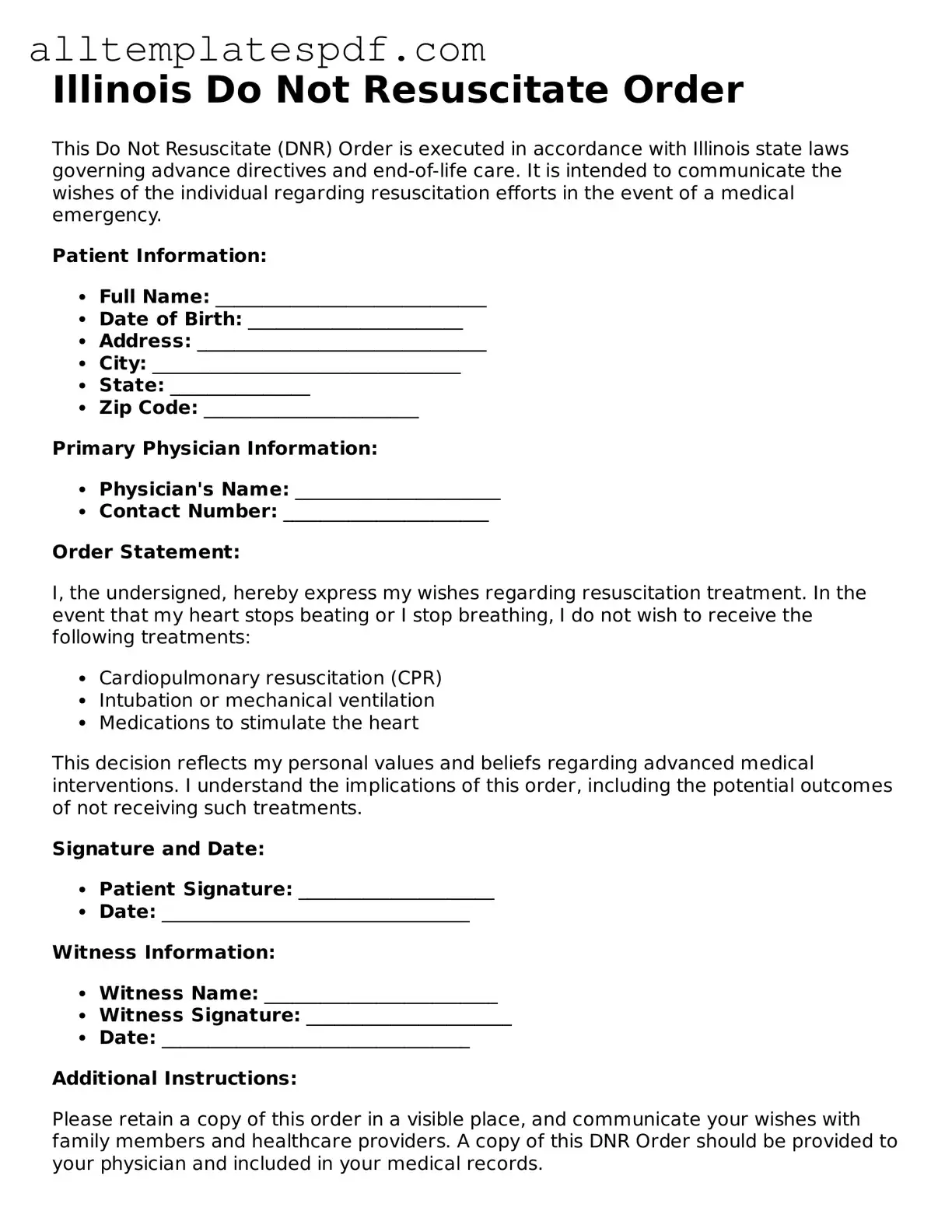Blank Do Not Resuscitate Order Template for the State of Illinois
The Illinois Do Not Resuscitate Order (DNR) form is a legal document that allows individuals to express their wishes regarding resuscitation efforts in the event of a medical emergency. By completing this form, individuals can ensure that their preferences for end-of-life care are respected and followed by healthcare providers. Understanding this important document is crucial for anyone considering their options for medical treatment and personal autonomy.
Take the next step in ensuring your wishes are known and respected. Fill out the form by clicking the button below.
Open Editor
